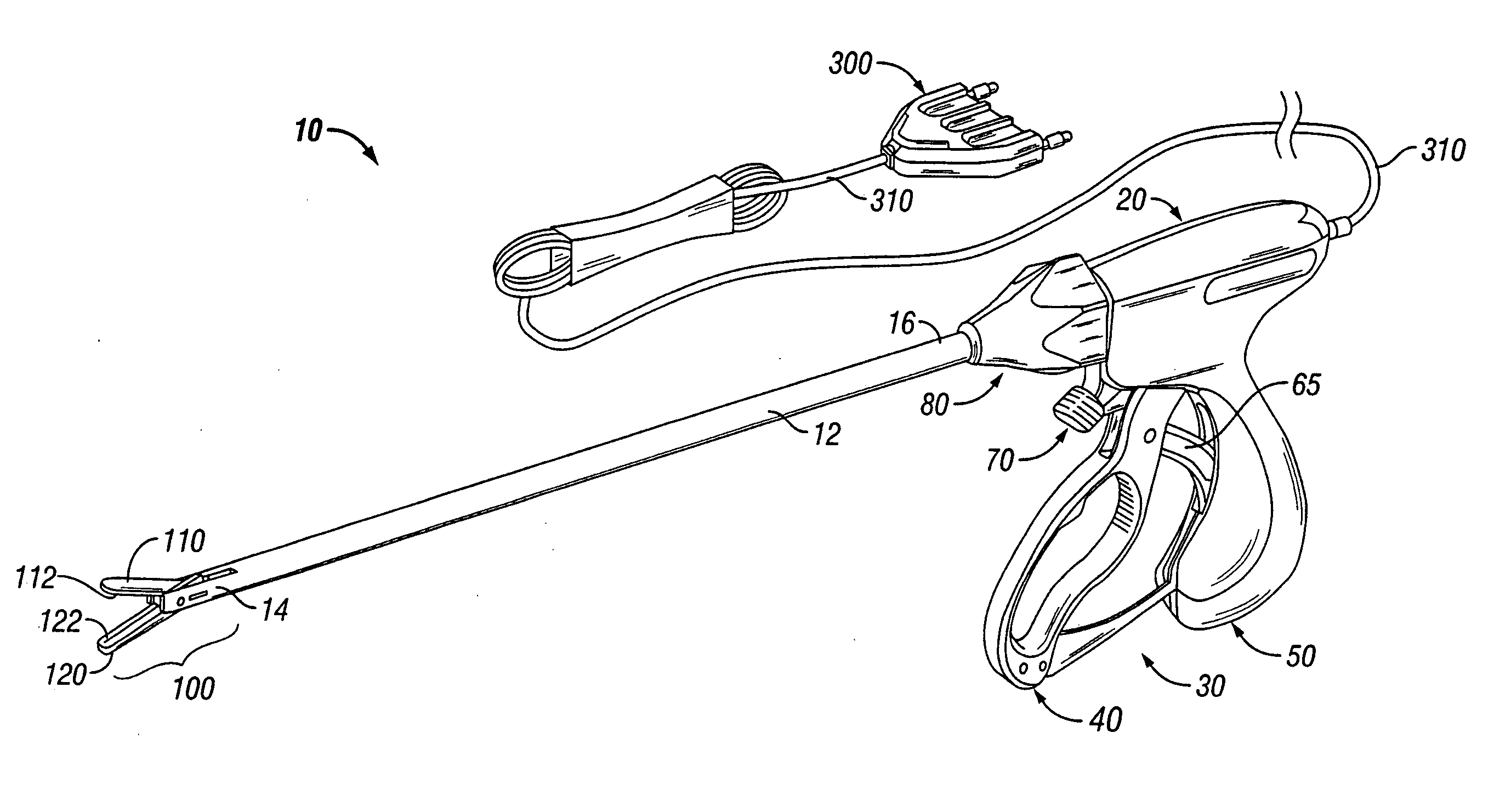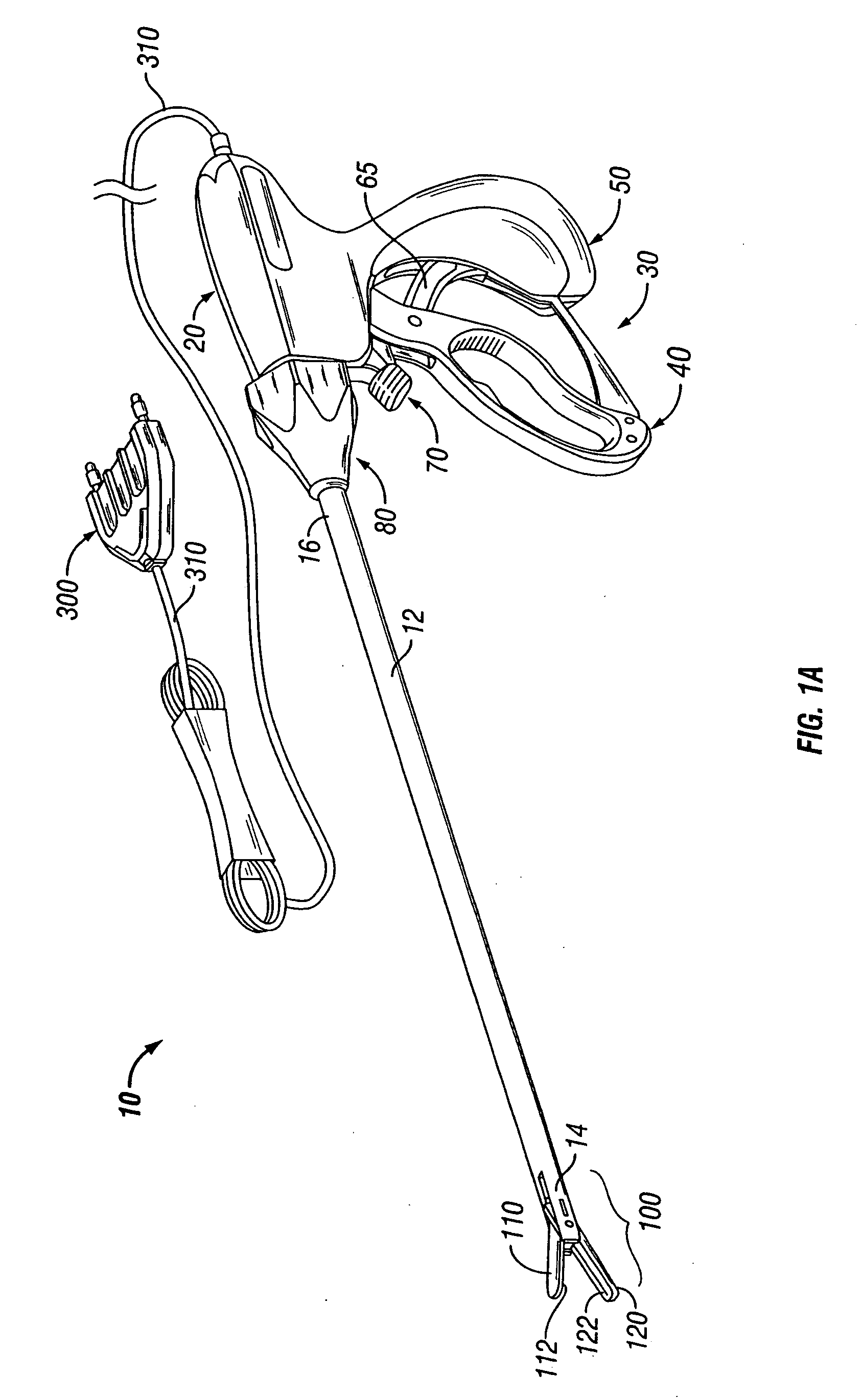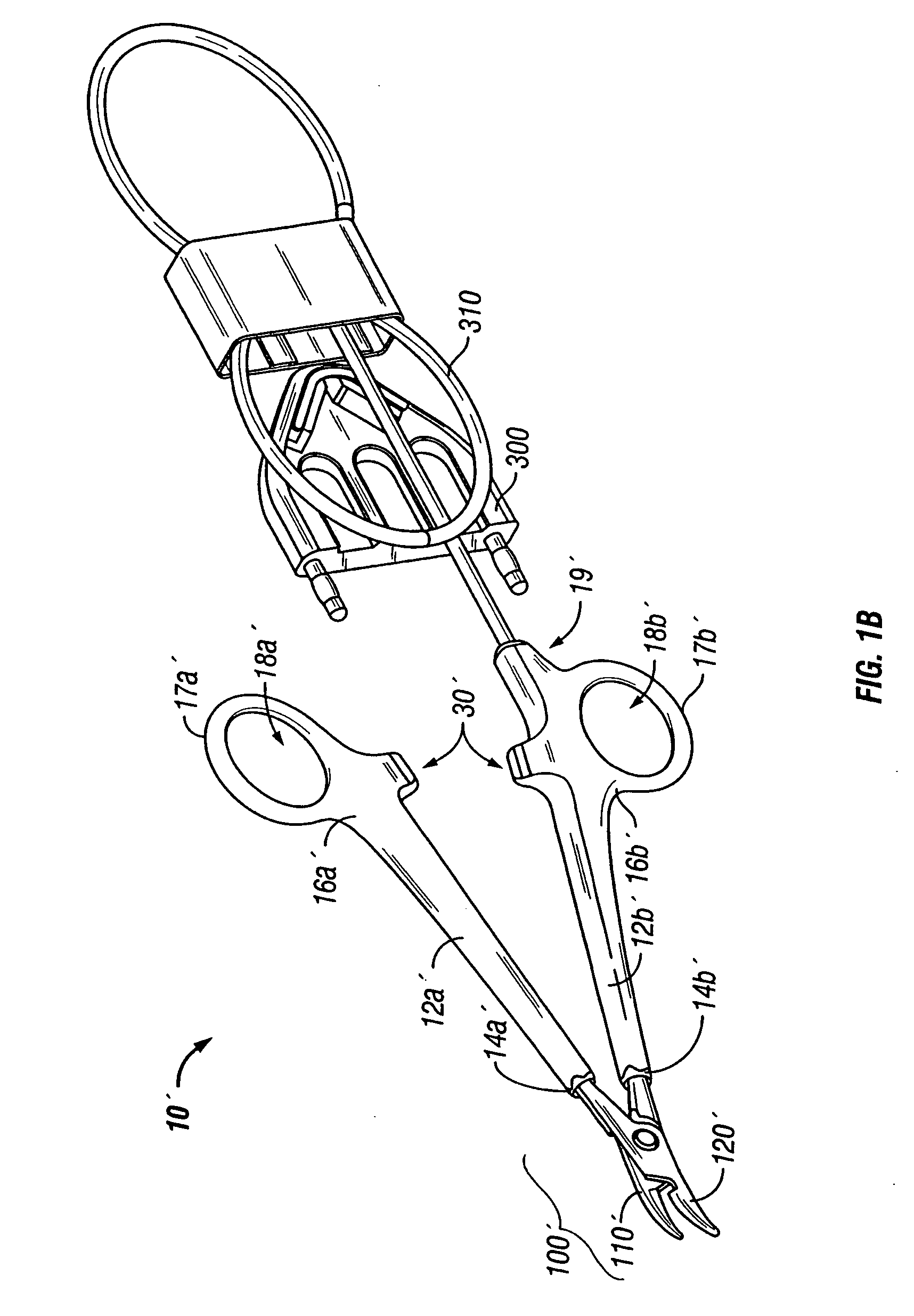Incorporating rapid cooling in tissue fusion heating processes
a tissue fusion and rapid cooling technology, applied in the field of bipolar forceps, can solve the problems of ineffective or non-uniform sealing, difficult to adequately control the thickness of the resulting sealed tissue, and relatively ineffective vessel sealing purposes, and achieve the effect of dissipating heat away from surrounding tissu
- Summary
- Abstract
- Description
- Claims
- Application Information
AI Technical Summary
Benefits of technology
Problems solved by technology
Method used
Image
Examples
Embodiment Construction
[0046] It has been found that by providing a thermally conductive and electrically non-conductive material adjacent to the electrically conductive sealing surfaces, surgeons can more readily and more easily produce a consistent, high quality seal and effectively reduce thermal spread across or to adjacent tissue. For the purposes herein the term “thermal spread” refers generally to the heat transfer (heat conduction, heat convection or electrical current dissipation) dissipating along the periphery of the electrically conductive or electrically active surfaces to adjacent tissue. This can also be termed “collateral damage” to adjacent tissue and is further discussed in commonly owned, co-pending PCT Patent Application PCT / US04 / 13273 entitled “ELECTROSURGICAL INSTRUMENT WHICH REDUCES THERMAL DAMAGE TO ADJACENT TISSUE” which is incorporated herein by reference in its entirety.
[0047] It is envisioned that the configuration of the thermally conductive material which surrounds the perim...
PUM
 Login to View More
Login to View More Abstract
Description
Claims
Application Information
 Login to View More
Login to View More - R&D
- Intellectual Property
- Life Sciences
- Materials
- Tech Scout
- Unparalleled Data Quality
- Higher Quality Content
- 60% Fewer Hallucinations
Browse by: Latest US Patents, China's latest patents, Technical Efficacy Thesaurus, Application Domain, Technology Topic, Popular Technical Reports.
© 2025 PatSnap. All rights reserved.Legal|Privacy policy|Modern Slavery Act Transparency Statement|Sitemap|About US| Contact US: help@patsnap.com



